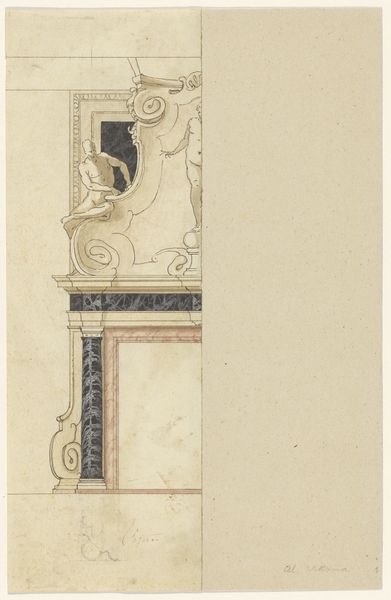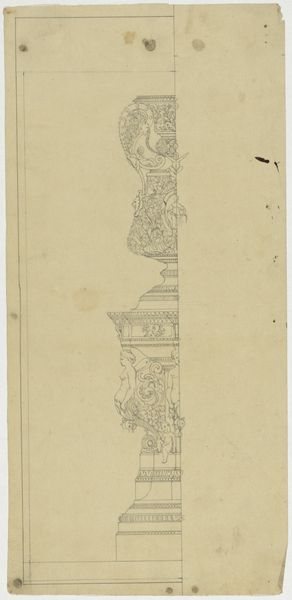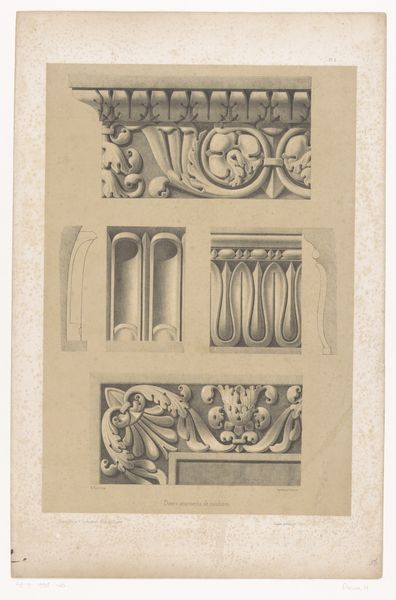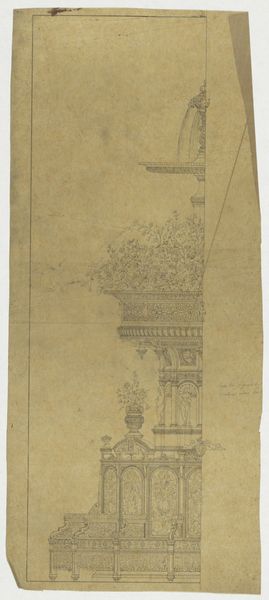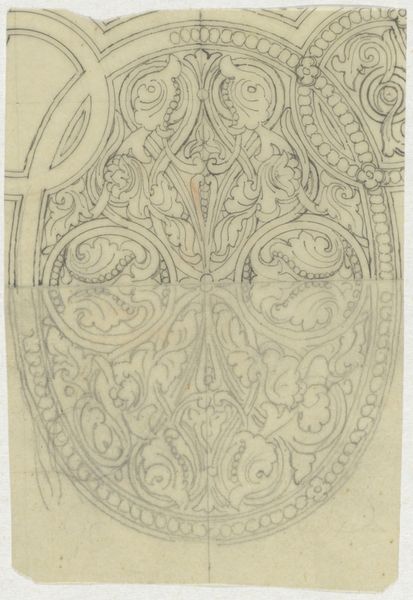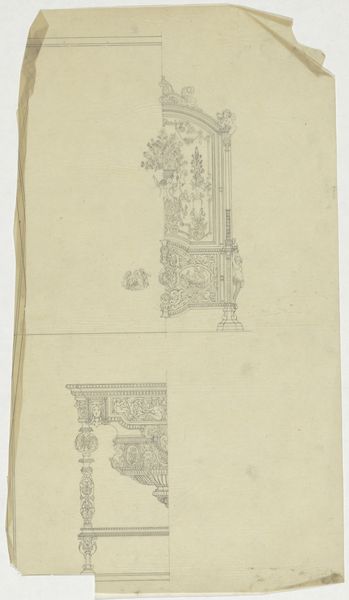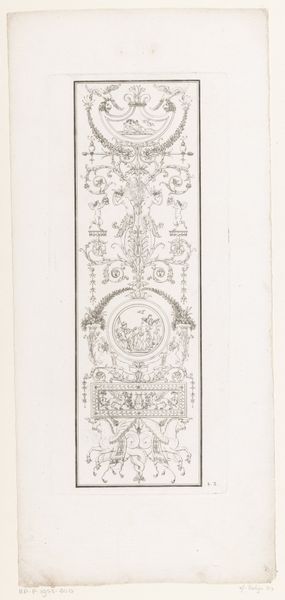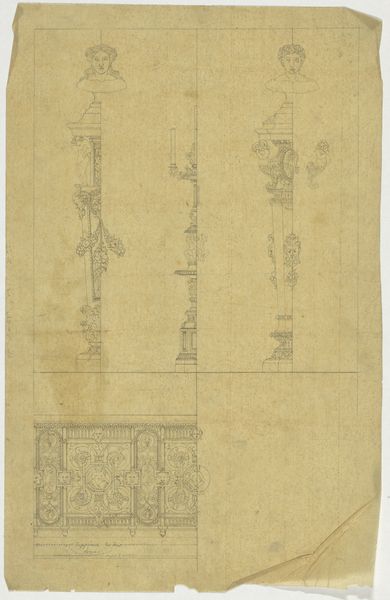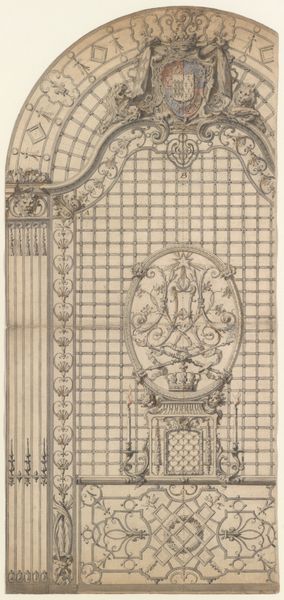
Fragmenten karton voor het glasraam in de westgevel van Joris van Egmond (Bisschop van Utrecht 1535-1559) voor de Sint Bavo Kerk te Haarlem 1541
0:00
0:00
drawing, paper, pencil, architecture
#
pencil drawn
#
drawing
#
paper
#
11_renaissance
#
coloured pencil
#
pencil
#
watercolor
#
architecture
Dimensions: height 12035 mm, width 580 mm, height 3710 mm, height 76 cm, width 27 cm, depth 27 cm
Copyright: Rijks Museum: Open Domain
Curator: This is a fragment, a preparatory drawing on paper by Gerrit Boels, created around 1541. The full title reads, "Fragmenten karton voor het glasraam in de westgevel van Joris van Egmond (Bisschop van Utrecht 1535-1559) voor de Sint Bavo Kerk te Haarlem.” The drawing shows detailed plans for the stained glass window of the Saint Bavo Church. Editor: Initially, my impression is of something quite stark and incomplete. The somber color palette is very muted. It almost has a ghost-like quality, like peering into an unfinished historical world. Curator: Indeed, the pencil and watercolor rendering grants a monochromatic restraint. We can dissect how the image’s form employs a strict geometric structure – note the strong vertical lines punctuated by the curvilinear flourishes, as well as the way the blank space directs the eye towards architectural forms that evoke a strong sense of depth. Editor: The subject here invites discussions of religious power during the Renaissance and the place of Bishop van Egmond. To consider the societal and economic structures that allowed such opulent architectural projects is fascinating, while remaining keenly aware that it represents an exclusive moment for the wealthy and religious. Curator: You highlight the tension beautifully. Looking again at its formalism, it is difficult to miss how that Renaissance tension you mention is formalized in the image; in the carefully balanced planes that intersect but never quite resolve themselves fully into pure geometrical perfection. Editor: I agree; but from an activist lens, such incompleteness speaks of untold and unseen labor required to materialize such vision and monumentality. It demands, instead, accountability toward those invisible people. Curator: Undoubtedly, Gerrit Boels has laid out for our observation here far more than originally planned in this stained-glass window. I can only admire how so much complexity and significance can reside in what might seem at first like just an uncompleted study. Editor: In that sense, I understand your comment. Though preliminary sketches can be gateways for critical dialogue, revealing deeper connections to forgotten aspects of history.
Comments
No comments
Be the first to comment and join the conversation on the ultimate creative platform.

